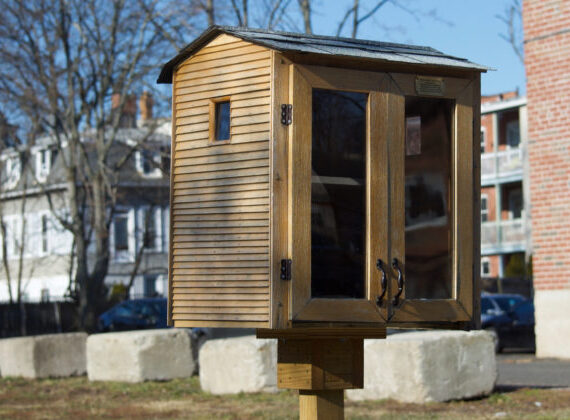There will be a discussion on the I-84 viaduct tomorrow evening at the Hartford Public Library. What has been a convenience for some, has proven to be an enormous inconvenience and eyesore for others. “The Hub of Hartford: A Citizens’ Forum” will begin at 6pm, with light refreshments available. There will be “experts” on hand from The City of Hartford, The Capitol Region Council of Governments, The Connecticut Department of Transportation, and people/institutions from the neighborhoods affected by the highway.
Nick Caruso, in “A Coordinated Urban Initiative in Hartford”, writes:
Let’s start with the growing “Hub of Hartford” movement to de-emphasize I-84 through the middle of Hartford. The decision to run the interstate highway through the center of the city was perhaps the most regrettable planning decision of the last century. The Hub group is exploring ways to minimize the damage.
Much of the highway corridor includes land where the central branch of the Park River use to flow. In tangent with the Hub project, the Capitol Region Council of Governments wants to run Hartford’s East Coast Greenway segment through the same area, taking advantage of the urban gaps left by the now-buried river.
The first part of this discussion happened in April. From Daniel D’Ambrosio’s article “Hartford’s Interstate Mistake: Neighborhoods cut off by an elevated stretch of I-84 are pushing hard to reconnect to the city’s downtown”:
“The Aetna Viaduct is considered by many in Hartford to be a scar on the Hartford landscape, and it provides no positive net value to the neighborhoods through which it passes,” states a white paper submitted to the city a year ago by the Aetna Viaduct Alternatives Committee, a grassroots neighborhood organization.
John O. Norquist, the former mayor of Milwaukee and current president and chief executive officer of the Congress for the New Urbanism, has a more blunt assessment of the freeways that were punched through the hearts of cities across the nation during the interstate building boom of the 1950s and 1960s.
“They’re a real turd in the punch bowl,” Norquist said last week. “You want to make a city ugly quick, put a freeway through the middle of it.”
This issue might not be as noticeable to those driving on the highway, but to those on bike, foot, and/or living in the neighborhoods, the highway is an obstruction to progress and community.
